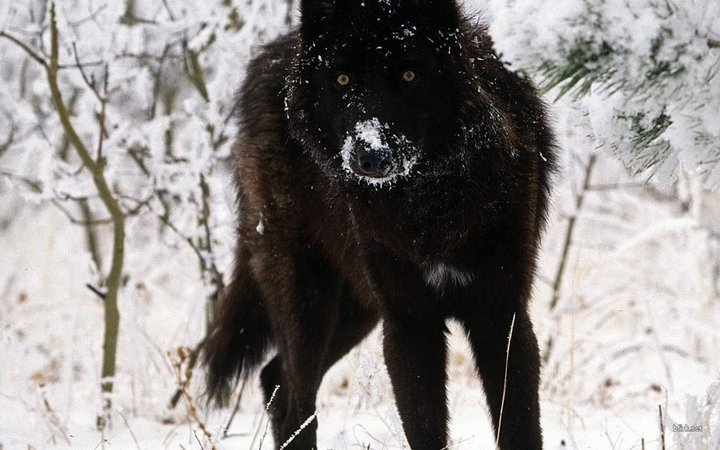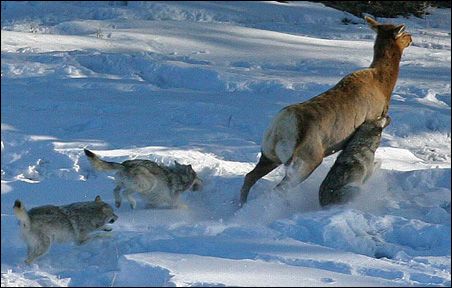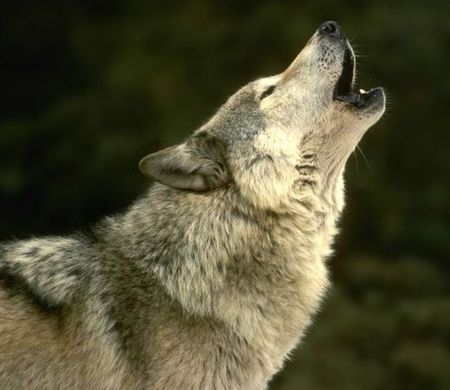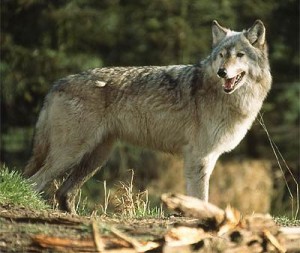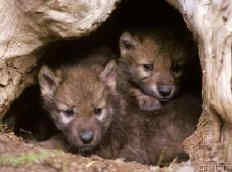
All Kinds of Wolves
This website is all about different kinds
of wolves!
- Fun Facts
Communication
-Wolves communicate with each other harmoniously rather than hostly and aggressively.
-Wolves usually defend there territories through vocalizations and leaving scent marks.
-Examples of some wolf communication tactics.
- Scent marks
- Vocalizations
- Visual displays
- Facial and body rituals
- Howling
The Wolf as Predator
-The Wolf is the ultimate predator.
-The Wolf is at the top of the food chain.
-It is designed for speed and catching and even killing large animals.
-It will try and catch the weakest animal in a group.
- It can kill the healthy, but knows that it has a much better chance if it tries to catch the sick or weak.
The Wolf's Fur
-It has 2 types of fur
- Guards
- Undercoat
-Wolves shed in the Spring and the Summer
and it sheds out in sheets.
-The color of the coat can be a wide range of
colors. Anywhere from white to red to black etc.
-The Wolf can use its fur to show anger.
Hierarchy
-Neutralizes aggression and keeps social order.
-2 Hierarchies in a wolf pack.
- One for males
- One for females
-Rank changes happen more often in the lower ranking positions of the pack.
-The wolves at the highest positions will hold their heads and tails high while the lower ranking wolves will roll over or crouch before the higher ranking wolf.
-Wolf pups are at the very bottom of the hierarchy, but have many freedoms the adult low ranking wolves do not have.
-The "Alpha" wolf is top ranking.
-The "Beta" wolf is second ranking
-The "Omega" wolf is lowest ranking.
Sense of Smell and Scent Marks
-The wolf's sense of smell is 100 times greater than any human's.
-A wolf leaves scent marks to leave a warning that that is its territory.
-Wolves roll on the ground to leave scent to try and get other pack members to interact with it.
Size and Weight
-Average height
- 26-32 inches from the shoulder
-Average foot size
- 4" wide by 5" long
-Average weight
- Males-70-110 pounds
- Females-60-80 pounds
Lifespan
-In the wild wolves tend to live to be around 6-8 years.
-In captivity they can live to be around 16.
Dens
-Wolves want to find a den that is near a good water supply and one that is
protected and within the pack's territory.
-Some examples of a good wolf den would be under the roots of an upturned tree,
in the hollow or crevice between rocks, and a hollow log.
-The Alpha female wolf will decide if she wants to reuse the old den or take
some time to find a whole new one.
Predators
-Wolves do not really have too many predators because they are at the top of the food chain.
-There are some animals that can kill them if the wolf is alone, however.
- Moose and Elk-They won't seek wolves out and kill them, but they can if they are defending their lives or the lives of there offspring.
- Large Cats-Fights over food that usually wouldn't happen otherwise.
- Coyotes and other large Canines-Fights over food that usually wouldn't happen otherwise.
Prey
-Small Prey-Rabbits, Mice, Fish, Squirrels, and Beavers
-Large Prey-Moose, Elk, Deer, and Bison
Feet
-The Wolf has extremely large feet.
-Each one of a Wolf's toes moves independently.
-The pads on the bottom of their feet are really thick.
-Front feet have only 4 toes while the back feet have 5.
Endangered Wolves
-Wolves are an extremely important part of an ecosystem. They help keep the species that are their prey in control.
-People are fearful of wolves, but they have no reason to be. There has never been an account of a wild wolf attacking a human.
-Wolves will always go for the weakest prey. That means that you have very little fear of them attacking healthy livestock and they keep the food chain in order.
-Without wolves in the world there would gradually become an overpopulation of deer and other prey of the wolf. With an overpopulation of these, there is in turn an under-population of their prey and thus disrupting the entire course of existence for many other species.
